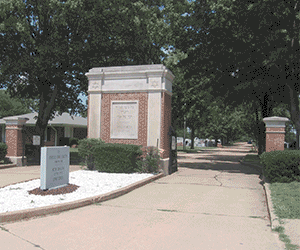Mom tries camping again, this time in a sukkah
Published October 15, 2008
Yom Kippur starts out as the most solemn holiday of the Jewish year, but it ends with one of the happiest celebrations. Once we break the fast with a bite of cheese blintze and deviled egg, it’s time to move the party outdoors and hammer in the first post of the sukkah, an outdoor hut that marks the beginning of the next holiday, Sukkot.
Sukkot is the Hebrew word for “booths,” and sukkah is the singular translation. The sukkah commemorates the time when the Israelites traveled the dessert wilderness for 40 years before Moses led them to Canaan — the land of their ancestors.
From dawn to dusk, a caravan of men, women, and children carried their donkeys, sheep, cattle, goatskins filled with drinking water, and small tabernacles, called sukkot.
At the end of a long day, families worked together to set up these small wooden huts in the middle of the dessert sand. They camped in their sukkot, which gave them shelter at night and protection from the blazing sun in the day.
The Jewish people vowed to always remember how God led the Children of Israel to Mount Sinai.
To this day, Jewish families carry on the tradition to build their own sukkah in the autumn when the first crops are harvested (Sukkah kits are available at many temples or online at www.sukkot.com).
Just as our ancestors did, we build the covering or roof of the sukkah, called s’chach (literally means ‘covering’) with any material that is cut from the earth, such as tree branches, corn stalks, bamboo reeds, and sticks. We also hang pictures of Jerusalem, gourds, fruit, leaves, and whatever else reminds us of Israel and the harvest season.
For seven days, Jewish families eat, study, and relax in their sukkah instead of their house, while some devout Jews sleep in the wooden booth, too.
As you may recall, I’m no camper, but I might give it a try, or at least dwell in the sukkah at night and watch the stars in the sky. Whenever I do, I’m reminded of how small my problems are in the scheme of the universe. Being outdoors also gives me a better appreciation of nature, including the trees, moon, grass, plants, and animals.
My family’s sukkah seems to grow every year. When my neighbors walk through my backyard on the way to school and want to know why I’m standing on a wobbly ladder, hanging little pumpkins from wood beams over my head, I tell them, “It’s tradition!”
Tradition is the answer to most Jewish questions.
Another tradition enjoyed by children of all ages is to shake the four species of plants, the lulav and etrog in the sukkah. The one species is etrog, which is the Hebrew word for “citron,” and is a yellow fruit that looks and smells like a lemon. The other three species are in the lulav, which are the branches of the palm, myrtle, and willows tied together. Each day of the holiday, October 13 through 19 (except on Shabbat), we hold the lulav and etrog together in our hands and wave the four species in the four directions of the compass as well as up and down. We take turns and shake the lulav and etrog to the north, south, east, west, Heaven, and Earth, which symbolizes that God is found everywhere and that the Jewish people are united as one.
We chant the following blessing over the lulav and etrog: Baruch ata adonai, eloheynu melech ha-olam, asher kidshanu b’mitzvotav vitzivanu al n’tilat lulav.
Praised are You, Adonai our God, Ruler of the Universe. Who has sanctified us by Your laws and commanded us to take up the lulav.
After we pass the lulav and etrog around, we bless the bread and sit down at our sukkah table and say the following blessing:
Baruch ata adonai, eloheynu melech ha-olam, asher kidshanu b’mitzvotav vitzivanu leshev ba Sukkah.
Praised are You, Adonai, our God, Ruler of the Universe. Who has sanctified us by Your laws and commanded us to dwell in the Sukkah.
“Mishegas of Motherhood” is the creation of Ellie S. Grossman, a St. Louis freelance writer and stay-at-home-mom who never stays home. Currently, she is trying to convince her husband to hang orange lights from the lattice walls in their sukkah. Feel free to send any comments to: [email protected] or visit her website at www.mishegasofmotherhood.com.














